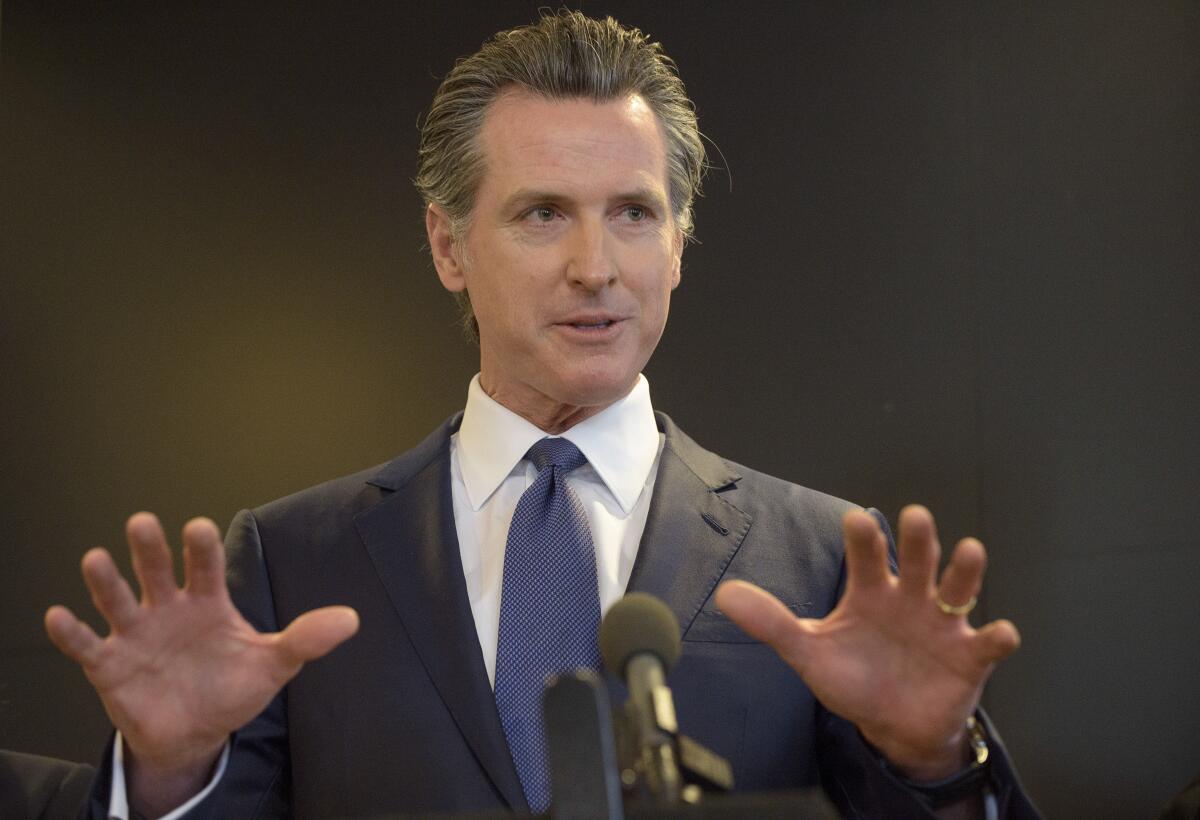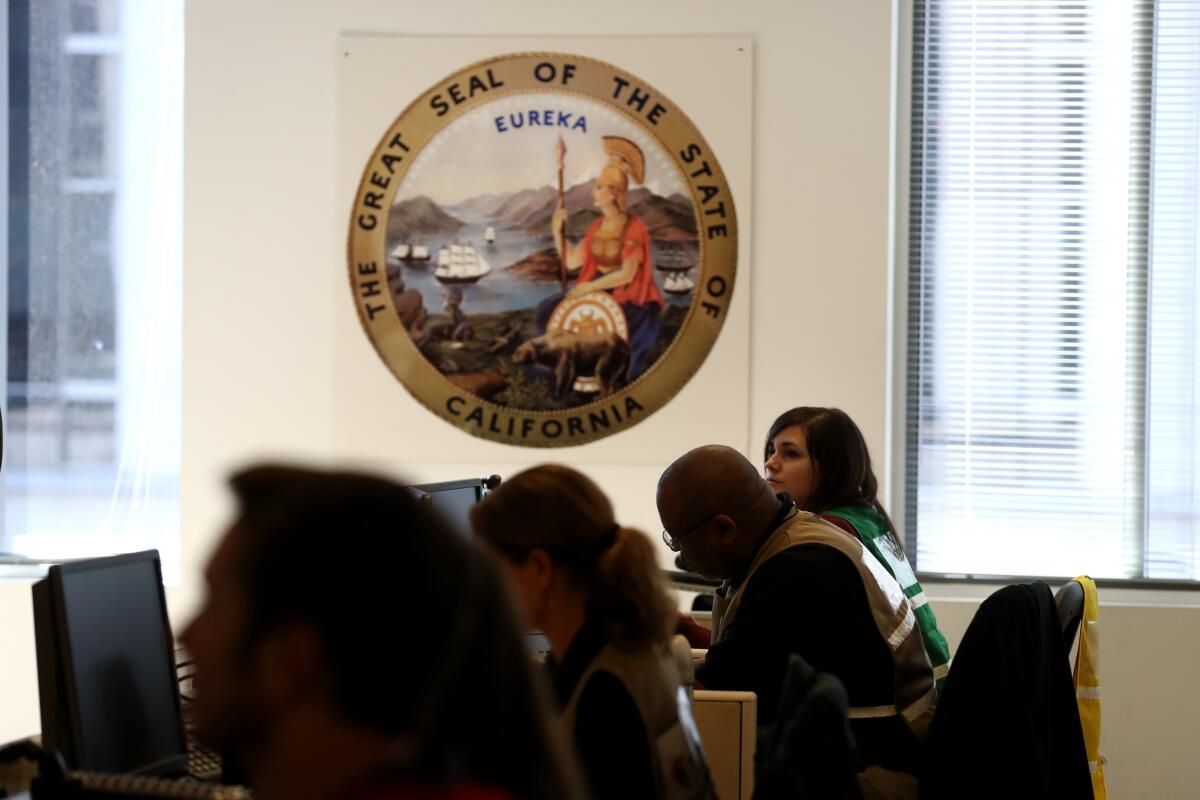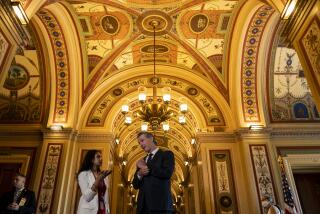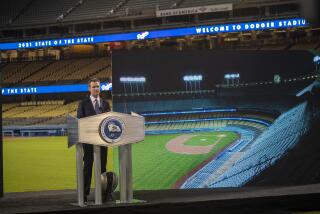Column: Newsom is doing what he should with the coronavirus crisis. But he needs to explain it better

SACRAMENTO — Governors are tested by crises. And Gov. Gavin Newsom is performing well handling one that is unlike any faced by a California chief executive in more than 100 years.
In 1918 during the Spanish flu pandemic, which killed roughly 700,000 Americans and up to 50 million people worldwide, Gov. William Stephens declared it everyone’s “patriotic duty” to wear a mask.
San Francisco made it a law. Anyone caught in public not wearing a gauze mask — or wearing it improperly — was charged with “disturbing the peace” and fined $5. Thankfully our political leaders haven’t gone that far in trying to protect everyone from the coronavirus.
Cities and counties — not Stephens — called most of the shots in battling the Spanish flu. Back then, governors didn’t have the instant communications Newsom has today through daily TV broadcasts and his Facebook page. Stephens had the telegraph and crank phones. It was the locals who ordered school closings and forbade public gatherings.
Gov. Pete Wilson was hit by a tsunami of disasters in the 1990s: drought, flood, wildfires, earthquake, riot and an economic slump that necessitated the Republican ironically fighting for the largest state tax increase in history. He earned kudos.
His successor, Gov. Gray Davis, looked weak during an energy crisis in 2000. He was rolled by power pirates such as Enron and further beaten down by state budget deficits. The crises led to his recall by voters in 2003.
In 2011 during the Great Recession, Gov. Jerry Brown inherited a $28-billion budget deficit. He raised taxes on the rich, slowed Democratic spending and left office praised for his fiscal prudence.
Newsom now has a cash reserve that had been projected to total $21 billion by summer. That’s likely to be spent down in the coming months as the governor and Legislature pull out money to fight the coronavirus and beef up safety net programs to help victims of the slumping economy. Tax revenues will be significantly reduced because of shuttered restaurants, bars, tourist attractions, sports events. Name it.
So although Newsom is looking good now — appearing to be sincere, earnest and energetic, and being productive — there will be plenty of precarious opportunities to screw up.
For starters, how long will people willingly tolerate house arrest? And what will he do if they start to rebel?
“All this has to end to maintain civilization as we know it,” emailed Joyce, a former college classmate and a fellow member of the most vulnerable generation. “At what point will people accept a risk factor in order to maintain the life we depend on?”
There is, of course, a budding national debate over that question. President Trump wants restrictions to be eased by Easter. Newsom is thinking two to three months — as apparently are many public health experts.
“This could create a much bigger problem than the problem we started out with,” Trump asserted at a White House news briefing Monday, referring to the restrictions. “You’re talking about people suffering massive depression, thinking suicide.”
I called psychiatrist Dr. Gregory Sazima, a Stanford faculty member, and asked how long people would accept being locked down in their houses.
“It absolutely depends on the trajectory of the next two weeks,” Sazima said. “If there are huge spikes in cases, it will be shocking enough to people that they’re going to want to stay home. But if nothing really happens, they’ll think they’ve been foolish. People might want to start kicking back again. They’ll say it’s not that big a deal. ‘We got fooled.’”
One laudable thing that Newsom has done is not asking cops to enforce his stay-at-home edict. It’s strictly voluntary, enforced by social pressure. This is a war against a virus, but we don’t need to feel like we’re living in an occupied country.
“Not at the moment, but you never know,” says Newsom spokesman Nathan Click of police citing people. “He’s leaving all actions on the table. But across the state, the vast majority of people are complying.”
Newsom has been working exclusively out of the state emergency services command center a few miles east of the state Capitol.

“He’s very interested in being where the action is, seeing what’s happening and thinking about what’s coming around the corner,” Click says. “He’s seeing what levers the state can pull to get the private sector to do what’s needed.”
Newsom has persuaded Apple and Pacific Gas & Electric Co. to each donate 1 million masks, Click says. Tesla has donated 1,000 ventilators.
The governor helped persuade Trump to route the 1,000-bed Navy hospital ship Mercy to Los Angeles during the coronavirus outbreak.
He has issued roughly a dozen coronavirus-related executive orders — decrees that delay foreclosures, allow local governments to halt evictions and have more flexibility in sheltering homeless people, make it easier to obtain unemployment benefits, fund schools even though they’re closed, expand bed capacity in hospitals….
One place Newsom could step up his game is in verbal communication.
In his televised briefings, the governor often seems like he needs more sleep, which he probably does. His speech is staccato with frequent pauses midsentence. And he’s too deep in the weeds.
Newsom rapidly throws out numbers that are hard for the listener to digest. And his words sound like a bureaucrat’s: “protocol,” “real time,” “procurement.”
“His words are not empathetic, they’re legalistic,” says Barbara O’Connor, a retired communications professor who headed a politics and media institute at Cal State Sacramento.
“The governor needs to give a cheerleader speech.”
Yes, we shut-ins all need some cheer.
More to Read
Sign up for Essential California
The most important California stories and recommendations in your inbox every morning.
You may occasionally receive promotional content from the Los Angeles Times.











